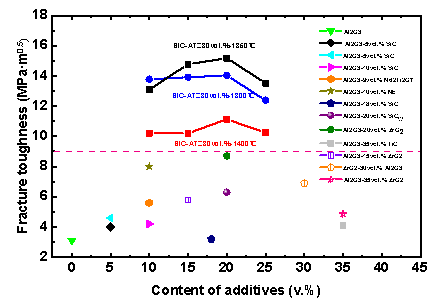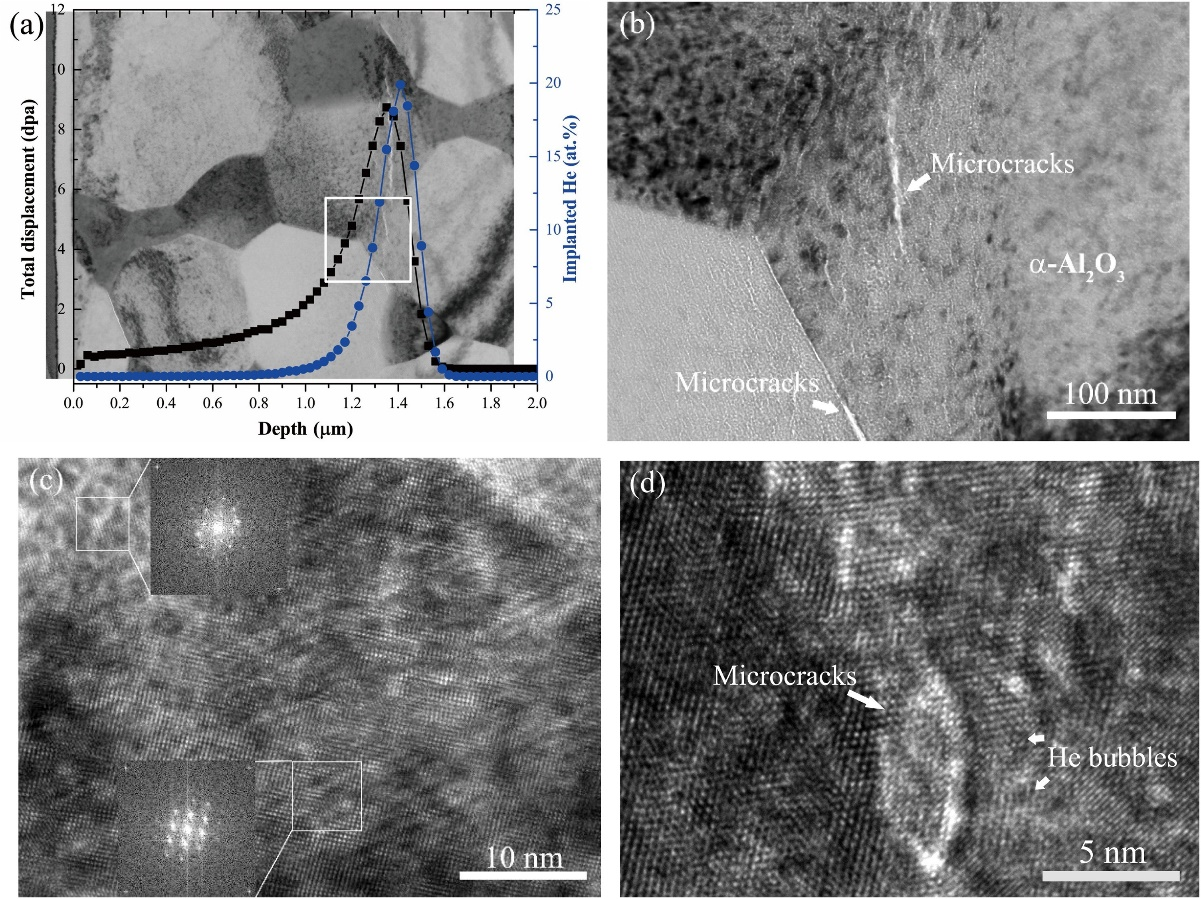By adding carbide particles or whiskers with high elastic modulus to the high-strength zirconia toughened alumina (ZTA) matrix, researchers successfully fabricated the phase transformation, particle and whisker synergistic toughened ceramic composites.
Then, researchers carried out the irradiation resistance evaluation of fabricated composites at the Heavy Ion Research Facility in Lanzhou (HIRFL), Low Energy Highly-Charged Ion Accelerator Facility (LEAF) and 320 kV Platform for Multi-discipline Research with Highly Charged Ions.
For the first time, researchers have found that the ceramic composites with specific structure and composition can effectively inhibit the formation and growth of large-size helium bubbles, and experimentally verified the ceramic composites possess high tolerance to irradiation induced amorphization.
These achievements provide important reference data and scientific basis for research and development of high-performance nuclear ceramic materials.

Figure 1. Comparison of fracture toughness of synergistic toughened ceramic composites with literature data. (Image by CHAI Jianlong)

Fig. 2. TEM images of Al2O3-ZrO2 ceramic composite irradiated with He ions to fluence of 4.0 × 1017 ions/cm2 at room temperature. (Image by ZHU Yabin)
The related results have been published in Ceramics International.
The research work was supported by the Strategic Priority Research Program of the Chinese Academy of Sciences, National Natural Science Foundation of China and Lanzhou Heavy Ion Accelerator National Laboratory.
Contact:
LIU Fang
Institute of Modern Physics

